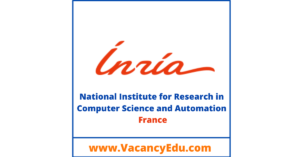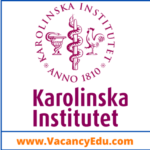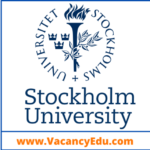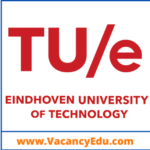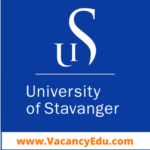Inria, France invites online Application for number of Fully Funded PhD Degree at various Departments. We are providing a list of Fully Funded PhD Programs available at Inria, France.
Eligible candidate may Apply as soon as possible.
(01) PhD Degree – Fully Funded
PhD position summary/title: PhD Position F/M Signal processing-based on the squared eigenfunctions of the Schrodinger operator. Application to EEG signals
Biomedical signals are usually characterized by the presence of peaks that provide direct or indirect information on the physiological and metabolic state. Usually, these pulse-shaped signals require preprocessing such as denoising and artifact removals. Further analysis and processing might be required in some specific situations to allow for the extraction of pertinent information from these signals. Despite the fact that the literature abounds with signal processing methods, there are still challenges that need to be overcome and further improvements can be achieved for processing pulse-shaped signals. In this context, a quantum-based signal processing method has been proposed in 1. This method called the semi‐classical signal analysis (SCSA) method decomposes the signal into a set of functions given by the squared eigenfunctions of the Schrödinger operator associated with its negative eigenvalues 1. Thus, and unlike traditional signal decomposition tools, the SCSA expresses the signal through a set of functions that are signal dependent, that is, these functions are not fixed and known in advance but are computed by solving the spectral problem of the Schrödinger operator whose potential is the signal to be analyzed. Accordingly, these eigenfunctions capture more details about the signal and its morphological variations 2. The SCSA has been successfully applied in many applications for signal representation, denoising, post‐processing, and feature extraction. For example, it has been used for arterial blood pressure waveform analysis in 3,4 and for magnetic resonance spectroscopy (MRS) denoising 5, for MRS water suppression 6, and for MRS lipid suppression 7. It has been also used for feature extraction in epileptic seizure detection 8 and for the characterization of PPG signals and blood pressure signals for non-invasive estimation of central pressure and arterial stiffness respectively 9. Recent work on the characterization of EEG signals for epileptic seizure detection and seizure onset zone location has shown promising results 10, 11.
Deadline : 2026-09-30
(02) PhD Degree – Fully Funded
PhD position summary/title: PhD Position F/M Modeling and Simulation of Exascale Storage Systems
This thesis is placed in the context of NumPEx (https://numpex.fr/), a key national project whose goal is to co-design the software stack for the exascale era and prepare applications accordingly. This thesis will be co-supervised by Inria and CEA, respectively the Inria center at the University of Rennes and the CEA center at Bruyères-Le-Châtel, near Paris. Beyond the supervision, collaborations within NumPEx with the different partners of the consortium are to be expected.
Deadline : 2024-12-31
View All Fully Funded PhD Positions Click Here
(03) PhD Degree – Fully Funded
PhD position summary/title: PhD Position F/M PhD position F/M Building physics-based multilevel surrogate models from neural networks. Application to electromagnetic wave propagation
Numerical simulations of electromagnetic wave propagation problems primarily rely on a space discretization of the system of Maxwell’s equations using methods such as finite differences or finite elements. For complex and realistic three-dimensional situations, such a process can be computationally prohibitive, especially when the end goal consists in many-query analyses (e.g., optimization design and uncertainty quantification). Therefore, developing cost-effective surrogate models is of great practical significance.
There exist different possible ways of building surrogate models for a given system of partial differential equations (PDEs) in a non-intrusive way (i.e., with minimal modifications to an existing discretization-based simulation methodology). In recent years, approaches based on neural networks (NNs) and Deep Learning (DL) have shown much promise, thanks to their capability of handling nonlinear or/and high dimensional problems. Model-based neural networks, as opposed to purely data-driven neural networks, are currently the subject of intense research for devising high-performance surrogate models of parametric PDEs.
Deadline : 2024-11-30
(04) PhD Degree – Fully Funded
PhD position summary/title: PhD student F/M Bandit theory for personalized patient monitoring.
The BIP-UP project funded by the ANR begins on January 1, 2023 and will last 4 years. BIP-UP is based on a collaboration that has existed for several years between the Inria Scool team, led by Philippe Preux, and the INSERM 1190 unit located at Lille University Hospital, led by François Pattou, both professors at the University of Lille. .
This collaboration aims to study the use of health data for personalized patient monitoring after surgical intervention. The hope is that the health data collected by different actors will make it possible to move from an identical monitoring protocol for all patients to a personalized protocol which, by being adapted to each patient, would be better followed by patients, therefore with a better benefit for their health.
Started in 2019, this collaboration has already borne fruit. On the one hand, these 3 years of work have allowed us to better identify and characterize the problems to be addressed and the ways to address them. Furthermore, in addition to permanent staff in the two teams, an engineer, a doctoral student and a post-doc have carried out significant preliminary work.
Deadline : 2024-08-01
(05) PhD Degree – Fully Funded
PhD position summary/title: PhD Position F/M Fast solvers for studying light absorption by nanostructured imagers
The exploitation of nanostructuring in order to improve the performance of CMOS imagers based on microlens grids is a very promising avenue. In this perspective, numerical modeling is a key component to accurately characterize and optimize the absorption properties of these complex imaging structures which are intrinsically multiscale (from the micrometer scale of the lenses to the nanometric characteristics of the nanostructured material layers). The present PhD project is proposed in the context of a collaboration between the Atlantis project-team of Inria research center at Université Côte d’Azur and STMicrolectronics (CMOS Imagers division of the Technology for Optical Sensors department) in Crolles. A Cifre funding will support this project.
The objectives of the project are to design (1) a fast electromagnetic simulation approach based on a model reduction technique, to characterize numerically the light trapping in digital imagers exploiting nanostructured pixels and, (2) a multi-objective optimization strategy of the geometrical characteristics of the nanostructuring in order to simultaneously maximize the light absorption in a pixel and to minimize the crosstalk phenomenon between neighboring pixels. For the first time, in addition to the rigorous methods for solving Maxwell’s equations, we will be able to benefit from an alternative simulation approach based on model reduction. This new approach can be used in an optimization process and the expected gain in total computation time would be between 10 to 1000.
Deadline : 2024-06-30
Polite Follow-Up Email to Professor : When and How You should Write
Click here to know “How to write a Postdoc Job Application or Email”
(06) PhD Degree – Fully Funded
PhD position summary/title: PhD Position F/M Privacy on-demand and Security preserving Federated Generative Networks or Models
Future sixth-generation (6G) networks will be highly heterogeneous, with the massive development of mobile edge computing inside networks. Furthermore, 6G is expected to support dynamic network environments and provide diversified intelligent services with stringent Quality of Service (QoS) re- quirements. Various new intelligent applications and services will emerge (including augmented reality (AR), wireless machine interaction, smart city, etc) and will enable tactile communications and In- ternet of everything (IoE). This will challenge wireless networks in the dimensions of delay, energy consumption, interaction, reliability, and degree of intelligence and knowledge, but also in the dimen- sion of information and data sharing. In turn, 6G networks will be expected about leveraging data at the next step of the new communication system generation. First of all, they will generate large amounts of data much more data than 5G networks: multiple sources as Core, Radio Access Network, OAM, User Equipments (UEs) but also as private and/or personal devices/machines massively con- nected, data-generator applications as sensing, localization, context-awareness services etc. Besides, unlike today’s networks where traffic is almost entirely centralized, most 6G traffic will remain localized and highly distributed. The communication system will not only provide the bits reliably, but more importantly will provide the intelligent data processing through connectivity and resources computing in the devices, the edge, and the cloud in the network. For this, with Artificial Intelligence (AI) and Machine Learning (ML), machines will bring to networks the necessary intelligence very close to the place of action and decision-making and will also make data sharing possible.
Deadline : 2024-06-30
(07) PhD Degree – Fully Funded
PhD position summary/title: PhD student F/M Robust health monitoring in rotor dynamics using statistical learning
In an economic and social context marked by aging structures and shortages of materials, it is essential to ensure the proper functioning of existing structures, such as in energy production. Many types of defects can appear, but generally have the same impact: a crack. In the energy production sector, the main cause of failure of turbomachines is due to fatigue cracks which can lead to dramatic accidents as for the turbine of the hydroelectric power station of the Sayano-Shushenskaya dam (Russia) on 17 August 2009 which killed 75 people. The need to have effective and reliable methods for crack detection and monitoring of these structures is obvious to guarantee their proper functioning, increase their lifespan and avoid accidents. Reactive and preventive maintenance requires stopping energy production, which represents a complex organization with high costs and limits the overall efficiency of the equipment. Conversely, early detection of damage enables effective predictive maintenance, which reduces maintenance costs and downtime and increases production and service life.
Deadline : 2024-05-31
(08) PhD Degree – Fully Funded
PhD position summary/title: PhD Position F/M Modeling of large communication networks
The position is funded by the national program on communication networks
(PEPR réseaux du Futur, https://www.entreprises.gouv.fr/fr/actualites/france-2030-lancement-du-programme-reseaux-du-futur-et-de-france-6g).
The research will be conducted at INRIA and Télécom Paris in LINCS, a joint laboratory on communication networks.
Deadline : 2024-05-31
Click here to know “How to Write an Effective Cover Letter”
(09) PhD Degree – Fully Funded
PhD position summary/title: PhD Position F/M Topology Design for Decentralized Federated Learning
This PhD thesis is in the framework of Inria research initiative on Federated Learning, FedMalin https://project.inria.fr/fedmalin/.
The PhD candidate will join NEO project-team https://team.inria.fr/neo/.
NEO is positioned at the intersection of Operations Research and Network Science. By using the tools of Stochastic Operations Research, the team members model situations arising in several application domains, involving networking in one way or the other.
Deadline : 2024-05-31
(10) PhD Degree – Fully Funded
PhD position summary/title: PhD Position F/M Vehicle-and-mobile phone computing sharing as part of the edge-to-cloud continuum
Deadline : 2024-04-01
Connect with Us for Latest Job updates
(11) PhD Degree – Fully Funded
PhD position summary/title: PhD Position F/M Verified Offloading Orchestration of Network Functions at the Edge
This work is in the context of the HiSec project. The HiSec project is part of the 5G PEPR founded by the ANR, which focuses on cyber-security issues in future networks. These networks have played a key role in service delivery for digital infrastructures. These new networking technologies have also penetrated essential and critical services for our daily lives, such as energy, transportation or healthcare. The pervasive use of digital services and networks to control these critical infrastructures significantly increases the attack surface and the opportunities for attackers. We regularly observe attacks against these infrastructures, leading to successful compromise and very significant impacts. The objective of the HiSec project is thus to handle cybersecurity issues in these environments, and propose new mechanisms to protect these networks and detect attacks, attacks against the networking infrastructure itself, or against the services hosted or the users of the network.
Deadline : 2024-03-31
Polite Follow-Up Email to Professor : When and How You should Write
(12) PhD Degree – Fully Funded
PhD position summary/title: PhD Position F/M PhD Position F/M Interacting with Avatars in Virtual and Augmented Reality
This PhD position is framed in the context of the ANR project ASTRAL (Augmented Self: TowaRds effective Avatars in augmented reaLity). The general context of this project is the design and study of avatars in augmented reality. Avatars, i.e. digital representations of users in a Virtual Environment (VE) [1], are more and more present in our lives due to the recent democratization of Virtual Reality (VR) headsets and supported by the colossal investments of major economic actors such as Meta or Microsoft. Avatars today are the most broadly used means for representing users in an immersive VE and can be found in a wide range of applications in areas such as entertainment, tele-communication, medicine, education, etc. Such avatars have been shown to improve users’ presence [2] and performance [3] in immersive VEs, and even alter their perceptions [4]. Our general objective is therefore to enable and evaluate AR avatarization (i.e. providing users with their own AR avatar). Reaching this objective will help us pave the way to new innovative AR avatars by proposing new rendering and interaction methods along with perceptual understanding of their use. Considering this general objective, we will focus our efforts on three scientific objectives. This PhD will focus on the interaction dimension, and in particular on the “Interacting through AR avatars”. We envision the AR avatar as an interaction tool that will augment the user’s interaction capabilities, enabling the interaction with real and augmented content.
Deadline : 2024-03-31
(13) PhD Degree – Fully Funded
PhD position summary/title: PhD Position F/M The role of rapport in human-conversational agent interaction: Modeling conversation to improve task performance in human-agent interaction
The objective of this project is to build embodied conversational agents (also known as ECAs, or virtual humans, or chatbots, or multimodal dialogue systems) that have the ability to engage their users in both social and task talk, where the social talk serves to improve task performance. In order to achieve this objective, we model human-human conversation, and integrate the models into ECAs, and then evaluate their performance.
This project is located at the prestigious computer science institute INRIA in downtown Paris. It takes place in the context of the PRAIRIE Institute for Interdisciplinary Research on AI – one of the four 3IA institutes launched by the French government in 2019. For more information see
Deadline : 2024-03-31
(14) PhD Degree – Fully Funded
PhD position summary/title: PhD Position F/M Socially-Aware Embodied Conversational Agents: Achieving Task and Social Goals in Human-Computer Conversation with students
The objective of this project is to build embodied conversational agents (also known as ECAs, or virtual humans, or chatbots, or multimodal dialogue systems) that have the ability to engage their users in both social and task talk, where the social talk serves to improve task performance. In order to achieve this objective, we model human-human conversation, and integrate the models into ECAs, and then evaluate their performance. This position is a 3-4 year doctoral contract.
Deadline : 2024-03-31
(15) PhD Degree – Fully Funded
PhD position summary/title: Doctorant F/H Sécurité du tatouage en IA génératif
Le tatouage numérique est une technologie née dans les années 2000 qui consiste à insérer un signal imperceptible mais robuste dans un contenu hôte (image, vidéo, audio, texte, …). Bien que peu connu du grand public de par son imperceptibilité, le tatouage numérique est omniprésent dans notre société. La plupart des photos des agences de presse, des films au cinéma ou en VOD, des émissions télévisées sont tatouées essentiellement pour des raisons de protection du droit d’auteur [1,5].
En juin 2023, l’administration Biden-Harris a exhorté les grands acteurs américains de l’Intelligence Artificielle à déployer une IA éthique et responsable. Parmi les engagements souhaités, l’utilisation du tatouage numérique est explicitement cité comme technologie permettant de distinguer les contenus générés par l’IA [3].
De nombreux papiers scientifiques étudient la possibilité d’intégrer du tatouage dans l’IA générative que ce soit pour des images [2], de l’audio [8] ou du texte [4,6,7]. On compte trois grandes approches : i) entrainer un modèle sur des données tatouées, ii) modifier les poids d’un modèle déjà appris pour qu’il génère des contenus reconnus comme tatoués par un détecteur donné, iii) insérer le signal de tatouage post génération. Ces techniques sont évaluées en terme d’imperceptibilité (mesure de la qualité du contenu tatoué généré) et de robustesse (capacité à détecter le tatouage après modification du contenu).
Deadline : 2024-03-31
(16) PhD Degree – Fully Funded
PhD position summary/title: Doctorant F/H Désapprentissage automatique (machine unlearning)
Dans le domaine de l’apprentissage automatique, les modèles d’IA apprennent à partir de vastes en- sembles de données Cependant, les gros modèles ont tendance à garder une mémoire de ces données de manière implicite. Cette capacité non voulue est à l’origine d’attaques d’appartenance dites MIA pour Membership Inference Attack : Connaissant un modèle (boite blanche) ou ayant accès à un mo- dèle (boite noire), l’attaquant devine si une donnée particulière a servi à l’entrainement. Plus généra- lement, l’attaquant infère des caractéristiques des données d’entrainement. Cela peut aller jusqu’à reconstruire certaines de ces données, ce qui pose des problèmes de confidentialité.
Deadline : 2024-03-31
(17) PhD Degree – Fully Funded
PhD position summary/title: PhD Position F/M Stochastic methods for uncertainty modelling and quantification in coupled physical-biogeochemical ocean models
Different approaches have been developed in recent years to represent a variety of uncertainties such as those associated with transport, by introducing stochastic parameterizations into the fluid mechanics equations. For example, the method introduced by Mémin (2014), which is based on a decomposition of the velocity field into a resolved large-scale component and random fluctuations, makes it possible to represent the so-called localization uncertainties (LU) in the Navier-Stokes equations, and thus to represent the action of unresolved scales. It allows in particular to interpret and generalize some turbulence models by a particular choice of the random fluctuation component or its variance. Other methods based on the generation of autoregressive stochastic fields allow the transformation of deterministic ocean models into probabilistic/ensemble models, and have led to various applications with the NEMO model (Brankart et al., 2015).
Deadline : 2024-03-31
(18) PhD Degree – Fully Funded
PhD position summary/title: PhD Position F/M Latency-Driven resources placement in Fog-based IoT systems
Cloud computing and its three facets (IaaS, PaaS and SaaS) have become essential in today Internet Applications, offering many advantages such as scalability, elasticity or flexibility. With its different service models, the cloud still faces many issues prone to impact either the end-user (QoS), the provider (Cost) and the environment (Sustainability).
The Fog computing is a recent paradigm that address such issues by provisioning resources outside the cloud and closer to the end-device, at the edge of the network. This allows to reduce the latency and minimize the traffic between end-user and the cloud plat-form [3]. Several studies have shown that fog systems can indeed reduce the latency compared to cloud systems, but this reduction is not guaranteed and will highly depend on the components placement, leading sometimes to worse performance [8]. It has been also demonstrated that less traffic is sent to the cloud when using fog systems. However, a lack of a proper monitoring or reconfiguration mechanism in the fog exists, especially when the application is related to the IoT [7], where the cloud infrastructure is known not to be a viable solution.
Deadline : 2024-03-31
(19) PhD Degree – Fully Funded
PhD position summary/title: PhD Position F/M PhD position F/M : Machine learning for 3D cryo-electron tomogram analysis: localization, identification, and spatial organization of macromolecules in cells
The thesis will take place in the SAIRPICO project-team, which is specialized in the development of innovative methods for image restoration/reconstruction, motion analysis and computation of molecule trajectories in live cell imaging, and biophysical parameter estimation. The thesis we propose is at the frontier of applied mathematics, image processing/analysis, machine learning, and computer science. The goal is to develop generic image analysis algorithms for the analysis of 3D cryo-eletron tomograms. In particular, we will investigate innovative deep learning approaches (e.g., convolutional neural networks, transformers, Generative methods) to localize and identify macromolecules with a focus on nucleosome and linkers DNA in cell nuclei. From a methodological point of a view, we will focus on hybrid methods that bring together deep learning approaches based human-expert annotations and simulated annotations. The thesis will be supervised by Charles Kervrann (Inria Rennes).
Deadline : 2024-03-31
How to increase Brain Power – Secrets of Brain Unlocked
(20) PhD Degree – Fully Funded
PhD position summary/title: PhD Position F/M PhD thesis Proposal – Modelling and Estimation for Large Scale Multimodal Mobility Networks 2024-2027
Our society is more and more conscious of the contribution of current mobility modes to the climate crisis. This is why innovative low-carbon mobility solutions are being promoted by decision-makers and increasingly adopted by citizens. It is, for instance, expected that Electric Vehicles (EVs) will account for 70% of sold vehicles by 2030. The EU Commission, with its Fit 55 plan, even envisions a ban on the sale of new petrol and diesel cars as early as 2035. Meanwhile, adoption of micromobility modes is increasing significantly. Micromobility is an umbrella term used to describe the category of transportation using non-conventional battery-powered vehicles aimed at shrinking the physical and environmental footprint required for quickly moving people over relatively short distances. With micromobility, urban transportation modes have diversified very quickly. The challenge for cities encompasses organization and planning of public space and promotion of active mobility for health purpose given the passivity of some micromobility modes (e-scooters in particular). The co-existence of these modes in shared spaces cause various kinds of inconvenience for other users (people in wheelchairs, walking with a baby in a stroller, or elderly people) and alters the perception of safety which can lead vulnerable people to be more sedentary. Beyond the perception, it is attested that the number of accidents due to e-scooters is constantly increasing. It is therefore crucial to monitor the use of these micromobility modes by collecting information in a dynamic and non-intrusive way and then make recommendations for safer shared spaces and physical activity.
Deadline : 2024-03-22
(21) PhD Degree – Fully Funded
PhD position summary/title: PhD Position F/M Aerial Robots with the sense of touch
Aerial robots (commonly called “drones”) are nowadays extensively used to perceive the environment for surveillance and monitoring in applications like agriculture, mapping, etc. But if aerial robots were also able to effectively manipulate the environment, the application domains could be further extended toward new areas like contact-based inspection, assembly and construction, and so on. But contact is today synonymous for crash, and thus avoided. The unstable nature of aerial robots, their non-linear dynamics, and limited vision-based perception, make the manipulation problem in real environments extremely difficult and delicate.
To show the feasibility of Aerial Physical Interaction (APhI), the research community has previously focused on the design and control of aerial manipulators [1]. This opened
Deadline : 2024-03-21
(22) PhD Degree – Fully Funded
PhD position summary/title: PhD Position F/M Adoption dynamics in social networks for green mobility
Scientific scope and objectives: Tomorrow’s mobility is being reinvented by the increased usage of less polluting modes of transport, the diffusion of shared means of transportation, and the provision of information to users who must be actors of their mobility. The various mobility or communication technologies require time to be adopted and the full spectrum of their consequences must be understood. In order to analyze the long-term effects of a technology on overall mobility, models with different time scales must be integrated: on the one hand, the daily mobility that can be captured by macroscopic models such, and on the other hand, the gradual adoption of the technology, whose dynamics can be accelerated by the incentives from policy makers.
Deadline : 2024-02-29
(23) PhD Degree – Fully Funded
PhD position summary/title: PhD Position F/M Re-designing the Input Pipeline in Interactive Systems
Routine tasks such as controlling a system cursor or moving a virtual camera involve continuous visuo-motor control from the user, to which the system has to respond accurately and with minimal latency. Modern Human-Computer Interfaces use multi-step input pipelines between the user’s movements and the system’s feedback that are frequently opaque to interaction designers. Each of these steps (sensing, filtering, transforming, predicting, etc.) strongly affects the next, as well as the pipeline’s outcome. And yet, many of them are designed in isolation and calibrated by trial and error using legacy or ad-hoc approaches, or limited knowledge of the underlying psychomotor phenomena. This limits user performance and experience in everyday computer use, and hinders the design and adoption of new devices and sensing methods.
This Ph.D. will explore and address the knowledge gaps in the design of continuous input pipelines: in the way we design their steps, but also in our understanding of how users perceive, decide, and act in these real-time tasks. It will involve methods and tools from HCI, experimental psychology, machine learning, or control theory. The goal is to discover and establish generalizable guidelines, methods and algorithms to build input pipelines whose steps can fit and adapt to any user, system, or device.
Deadline : 2024-02-29
(24) PhD Degree – Fully Funded
PhD position summary/title: PhD Position F/M Doctoral Position on High-Performance Models for Multi-scale Acoustic Systems
Inria is the French national research institute for digital science and technology. This research center for scientific excellence is on the frontline of digital transformation in Europe and conducts a world-class research covering a wide range of high-impact scientific disciplines: international and industrial collaborations, ground-breaking research, software development, artificial intelligence (AI) and technological startups (DeepTech) are the DNA of the institute. Inria rank 16th worldwide at the AI Research ranking and is the number one European institute for frontier research in digital sciences.
Deadline : 2024-02-29
(25) PhD Degree – Fully Funded
PhD position summary/title: PhD Position F/M Enhancing AI-driven Predictive Analysis in Dynamic Contact Networks: Innovations in Bike-to-Infrastructure and LEO Satellite Connectivity
The doctoral position at Inria’s AGORA research group, located at the La Doua Campus in Lyon, offers a unique opportunity to collaborate with esteemed experts such as Prof. Hervé Rivano, Prof. Razvan Stanica, and Dr. Juan Fraire. The appointee will use advanced software and simulators, enhancing their expertise in communication systems, wireless sensor networks, and urban network planning. This role is enriched by AGORA’s strong international and academic-industrial collaborations. It offers the chance to delve into the smart city and satellite domains, exploring technologies pivotal to wireless sensor networks and massive machine-to-machine communications. This position is a gateway to cutting-edge research and professional growth in IoT and networking.
Deadline : 2024-02-29
(26) PhD Degree – Fully Funded
PhD position summary/title: PhD Position F/M Tracing business rules in source code
Because software is a computer model of the real world, it must continually adapt to changes in the world. For example, for software publisher Berger-Levrault, which equips more than three-quarters of local public administrations (i.e. 26,000 out of 36,000 French local authorities) in the education, health, maintenance, social and land management sectors, its software solutions must model the legislation in force in each area of application. This may concern, for example, the number of days of statutory leave for a birth or death, the tax rules to be applied when deducting tax at source, the pricing of a day in a nursing home or the calculation methods for invoicing children’s canteen meals. These rules, imposed on the software by the real world, are called Business Rules.
Each time there is a change in the real world, whether in the form of a decree implementing a law, case law or a change in local practice (e.g. the recent extension of parental leave to men), the software in the domain must be updated. This presupposes, of course, that the corresponding business rule can be found in the code. A typical piece of software implements a huge number (i.e. several tens of thousands) of business rules in code that extends over tens of thousands of pages.
Deadline :2024-02-29
(27) PhD Degree – Fully Funded
PhD position summary/title: PhD Position F/M Reliable Deep Neural Network Hardware Accelerators
Deep Neural Networks (DNNs) [1] are currently one of the most intensively and widely used predictive models in the field of machine learning. DNNs have proven to give very good results for many complex tasks and applications, such as object recognition in images/videos, natural language processing, satellite image recognition, robotics, aerospace, smart healthcare, and autonomous driving. Nowadays, there is intense activity in designing custom Artificial Intelligence (AI) hardware accelerators to support the energy-hungry data movement, speed of computation, and memory resources that DNNs require to realize their full potential [2]. Furthermore, there is an incentive to migrate AI from the cloud into the edge devices, i.e., Internet-of-Things (IoTs) devices, in order to address data confidentiality issues and bandwidth limitations, given the ever- increasing internet-connected IoTs, and also to alleviate the communication latency, especially for real-time safety-critical decisions, e.g., in autonomous driving.
Deadline : 2024-02-28
(28) PhD Degree – Fully Funded
PhD position summary/title: Doctorant F/H BioSwarm: Algorithmes bio-inspirés pour la recherche et la prise de décision collective
Nous proposons d’étudier la classe d’algorithme de consensus connue sous le nom dedynamique computationnelle, qui a récemment fait l’objet de nombreuses recherchesen raison de ses applications pour expliquer plusieurs phénomènes biologiques et sociaux, ainsi que de ses applications potentielles pour induire certains comportements émergents dans les systèmes multi-agents. Le problème fondamental qui nous intéresse est celui du consensus, dans lequel on souhaite que les agents du système se mettent d’accord sur une décision commune. Pour ce faire, nous avons étudié certaines dynamiques computationnelles inspirées du processus de prise de décision observé chez les abeilles. Plusieurs autres variantes de dynamiques computationnelles ont été étudiées, mais les résultats de portée générale ont été rares dans la littérature. Nous visons à faire avancer l’état de l’art sur le problème en étudiant une dynamique qui englobe plusieurs dynamiques précédentes en tant que cas particuliers : la dynamique de la k-majorité, dans laquelle chaque agent
Deadline : 2024-02-25
(29) PhD Degree – Fully Funded
PhD position summary/title: Doctorant F/H Simulation numérique d’écoulements multi-phasiques couplés à la température en LBM par un potentiel chimique
Numerical simulation of multi-phase flows coupled to temperature in LBM by a chemical potential CEA and Inria
study multiphase flows in porous media interacting with the porous matrix and temperature field. These flows are
inherently more complex to solve due to the nature of the phenomena involved: thermo-mechanical coupling, interface
mobility, high density ratio, and so on. However, such flows are of great interest as they are encountered in applications
related to energy production, energy management in cities, and for the health diagnosis of porous structures.
Deadline : 2024-02-21
(30) PhD Degree – Fully Funded
PhD position summary/title: PhD Position F/M High order boundary conforming adaptive meshing, and boundary conditions (AIRBUS/INRIA)
The proposed PhD program is a CIFRE program between Airbus and Inria. The student will be employed by Airbus and academically supervised by Inria researchers and Airbus engineers. They will spend half of their time at Inria (Bordeaux) and half at Airbus (Toulouse).
Safer and cheaper aircrafts require new concepts, and increasingly complex geometrical, physical, and numerical modeling. These new models must integrate multi-physical interactions between aerodynamics, propulsion, structures and materials. The systematic verification and validation of these models allows to integrate CFD in the certification process, reducing our reliance on costly experimental testing. It is with this goal in mind that AIRBUS, DLR, and ONERA have launched a new common CFD software project, called CODA.
Deadline : 2024-02-12
(31) PhD Degree – Fully Funded
PhD position summary/title: PhD Position F/M PhD : Energy efficient slicing for 6G networks using AI/ML technics
With the current energy crisis, the skyrocketing cost of energy, and the global awareness of the consequences of carbon emissions on our planet, it is crucial to reduce the global energy consumption related to Information and Communication Technologies, and in particular the one related to networks. Indeed, while being commercialized worldwide, the 5G technology coupled with ultra high resolution video has been blamed for its high energy consumption [5G-power]. To answer this issue, industrials and researchers have started to look beyond 5G to define the next 6G with at its core the need to evolve towards greener networks. The 6G standard imposes a transmission energy efficiency target in its Key Parameter Indicators (1picoJ/bit). However,
Deadline : 2024-02-11
(32) PhD Degree – Fully Funded
PhD position summary/title: PhD Position F/M Deep Neural Network-assisted computational design of highly efficient ultrafast dynamical metasurfaces
The present doctoral project is part of a collaborative project between the Atlantis project-team from the Inria Research Center at Université Côte d’Azur and the CNRS-CRHEA laboratory in Sophia Antipolis, France.
Atlantis is a joint project-team between Inria and the Jean-Alexandre Dieudonné Mathematics Laboratory at Université Côte d’Azur. The team gathers applied mathematicians and computational scientists who are collaboratively undertaking research activities aiming at the design, analysis, development and application of innovative numerical methods for systems of partial differential equations (PDEs) modelling nanoscale light-matter interaction problems. In this context, the team is developing the DIOGENeS [https://diogenes.inria.fr/] software suite, which implements several Discontinuous Galerkin (DG) type methods tailored to the systems of time- and frequency-domain Maxwell equations possibly coupled to differential equations modeling the behaviour of propagation media at optical frequencies. DIOGENeS is a unique numerical framework leveraging the capabilities of DG techniques for the simulation of multiscale problems relevant to nanophotonics and nanoplasmonics.
Deadline : 2024-02-08
About The National Institute for Research in Computer Science and Automation (Inria), France –Official Website
The National Institute for Research in Computer Science and Automation (Inria) is a French national research institution focusing on computer science and applied mathematics. It was created under the name Institut de recherche en informatique et en automatique (IRIA) in 1967 at Rocquencourt near Paris, part of Plan Calcul. Its first site was the historical premises of SHAPE (central command of NATO military forces), which is still used as Inria’s main headquarters. In 1980, IRIA became INRIA. Since 2011, it has been styled Inria.
Inria is a Public Scientific and Technical Research Establishment (EPST) under the double supervision of the French Ministry of National Education, Advanced Instruction and Research and the Ministry of Economy, Finance and Industry.
Disclaimer: We try to ensure that the information we post on VacancyEdu.com is accurate. However, despite our best efforts, some of the content may contain errors. You can trust us, but please conduct your own checks too.
Related Posts
- 08 PhD Degree-Fully Funded at Umea University, Sweden

- 12 PhD Degree-Fully Funded at Karolinska Institute, Sweden

- 19 PhD Degree-Fully Funded at Stockholm University, Sweden

- 19 PhD Degree-Fully Funded at University of Antwerp, Belgium

- 20 PhD Degree-Fully Funded at Lund University, Scania, Sweden

- 36 PhD Degree-Fully Funded at Eindhoven University of Technology, Netherlands

- 15 PhD Degree-Fully Funded at University of Southern Denmark, Denmark

- 15 PhD Degree-Fully Funded at Aalborg University, Denmark

- 09 PhD Degree-Fully Funded at University of Stavanger, Norway


